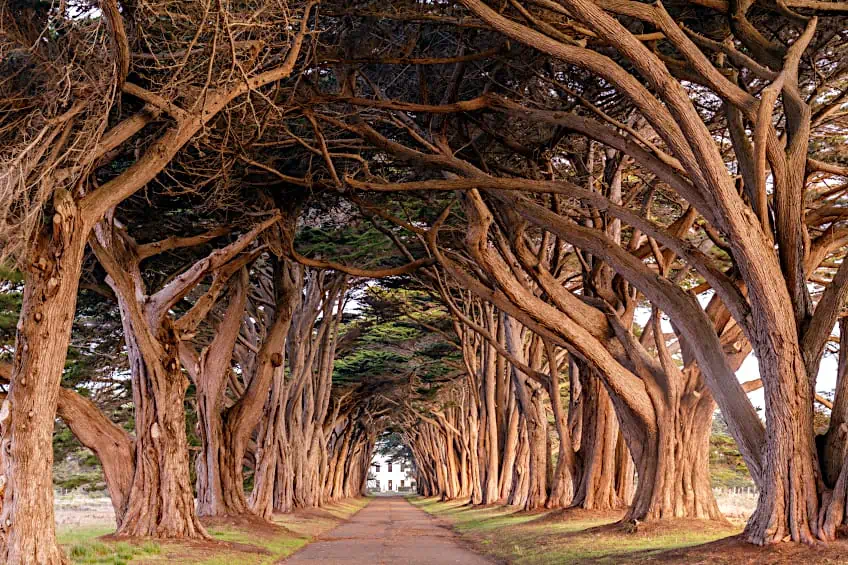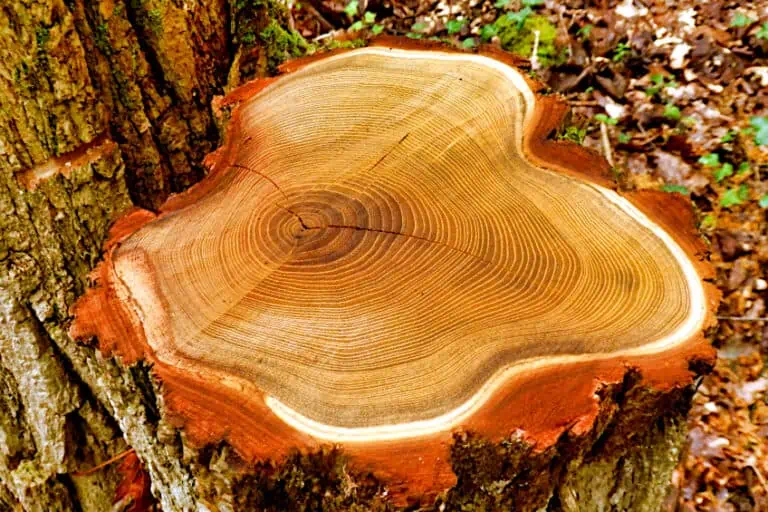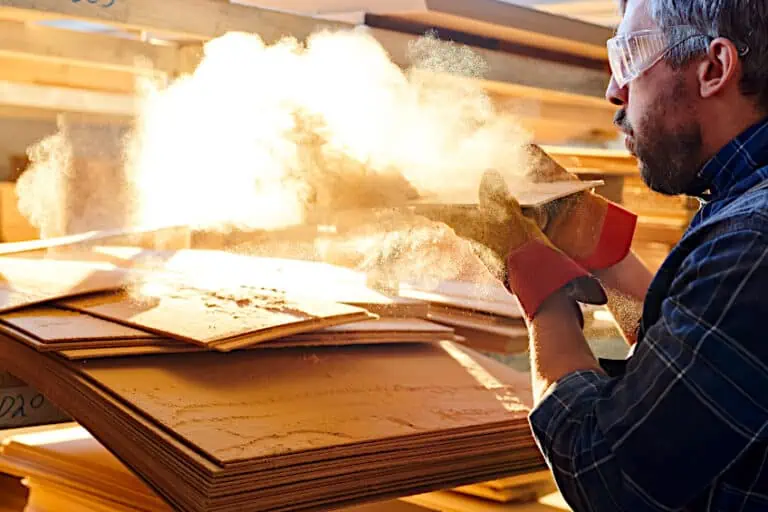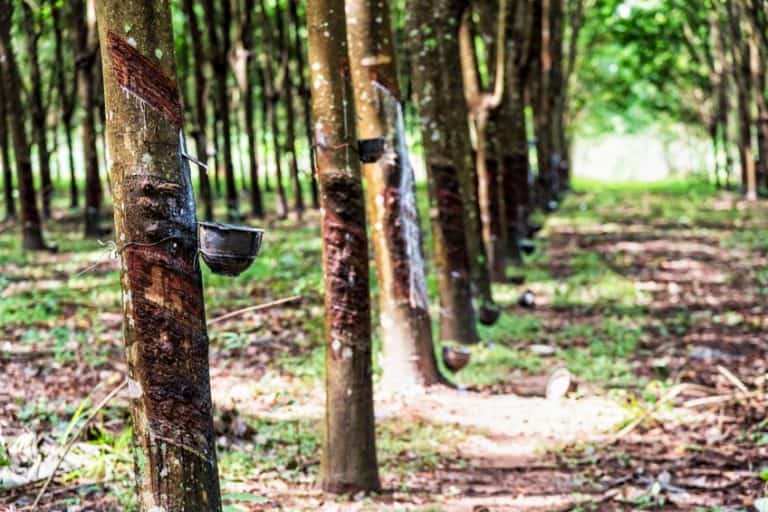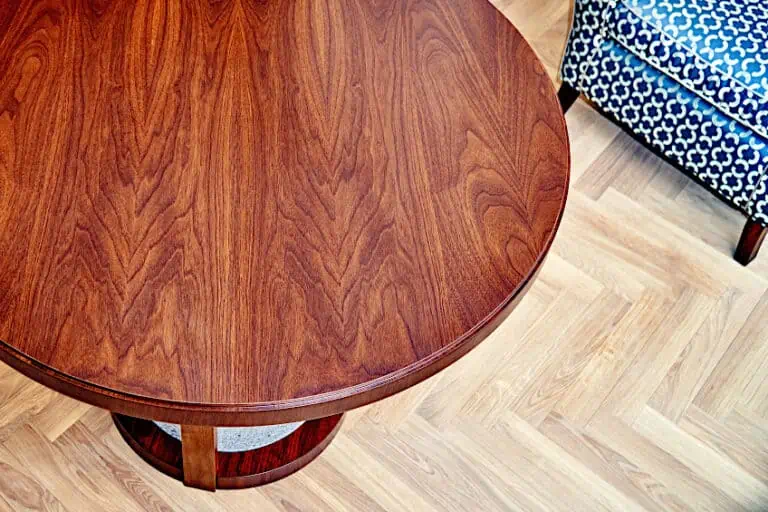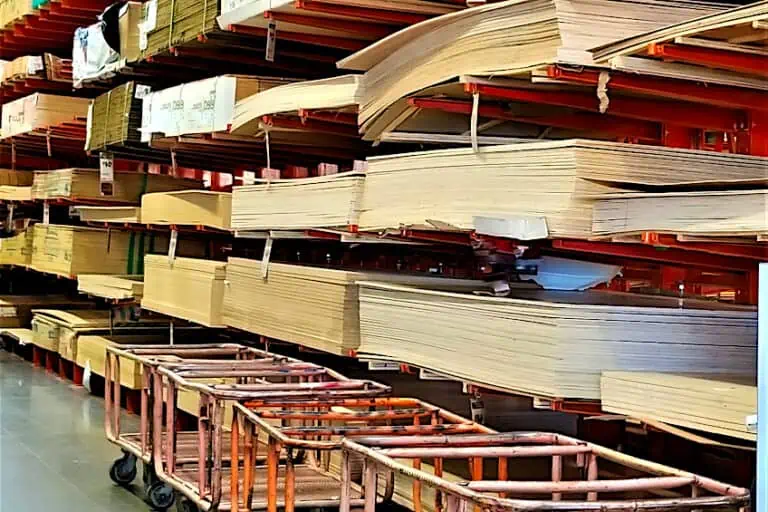Cypress Wood – Guide to This Durable and Versatile Softwood
While hardwood species are often seen as the superior wood type in most heavy-duty applications, they might not always be the best tool for the job. Softwood species can be just as useful, even though they aren’t always as versatile. One of the most popular softwood species on the face of the planet is cypress wood, and for good reason. To find out more about this wood species, let’s have a look at where it comes from, what it looks like, and what it is used for.
What Is Cypress Wood?
Cypress wood is the softwood of the genus Cupressus. Like most softwood species, cypress wood is evergreen, and instead of leaves, the tree is equipped with little needle-like growths. Their means of reproducing lies in pinecones containing their seeds that drop to the ground and sink into the soil, allowing new trees to sprout and grow.
Cypress wood generally looks yellowish-brown in color, tends to be pretty lightweight on its exterior (known as the sapwood), and tends to be white in color on the inside (known as the heartwood). Cypress wood is pretty strong for a softwood species, and despite this it is also quite light, making it perfect for certain applications outdoors and in your home.
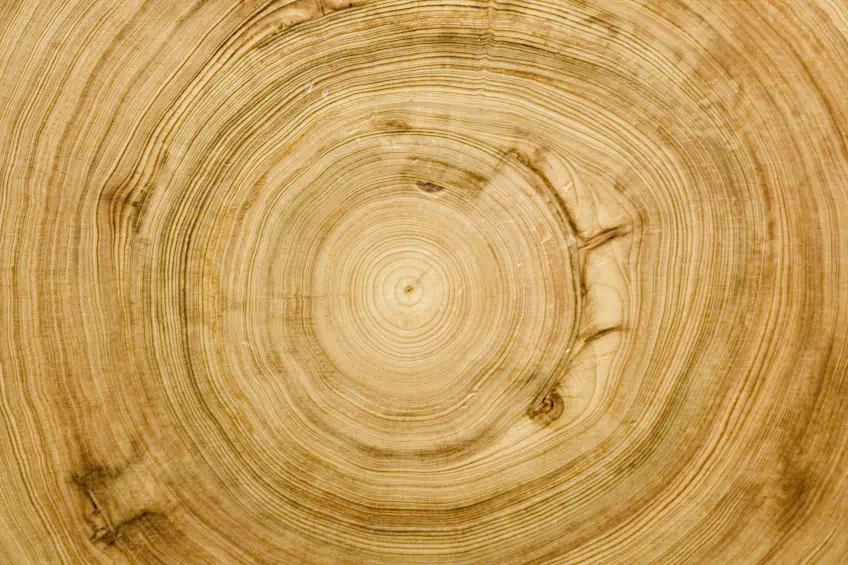
Adding to its versatility both indoors and outdoors, cypress wood is inherently resistant to rot, which means that things like mold and moisture that would ordinarily affect softwood species in harsh environments don’t have an effect on it. This makes cypress wood a very sought-after wood species for quite a few applications.
Cypress wood tends to look fairly good in its standard form, and will even change from its light brown hues to a light gray color as it ages if left exposed to the elements when untreated. If you do treat your cypress wood you’ll be happy to know that it’s quite easy to stain and tends to darken quite nicely with relatively little effort.
Cypress wood can primarily be found on the Atlantic coastline in wet swampy areas where it has as much nutrient-rich soil as it needs to grow. These trees can be found in many places, from Delaware to Florida, to the Gulf of Mexico, and even along the border between the United States and Mexico and along the Mississippi Delta.
When it comes to the rot resistance of cypress the older the growth the better. Old-growth cypress wood is becoming increasingly challenging to come by because it has superior rot resistance, whereas newer-growth cypress is generally considered to only have a moderate resistance to rot (at least by comparison).
Types of Cypress Wood
Like many other hardwood and softwood species there are different types to choose from. Some species of cypress have characteristics that are unique to them, and knowing the difference between the different species can help you choose the correct one for your application. Here are some of the commonly used cypress wood species you could encounter some of their characteristics.
Bald Cypress (Taxodium Distichum)
Bald cypress is a commonly found and used cypress wood species thanks to some of the characteristics we mentioned previously. It is commonly referred to as yellow cypress thanks to the texture of its sapwood and has earned the name “bald” cypress due to how it sheds its needle-like extremities at certain times of the year.
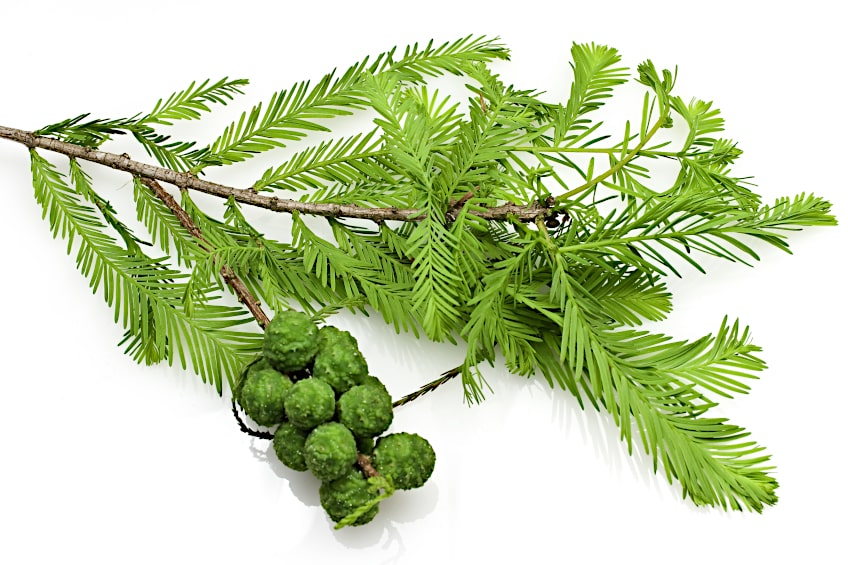
Bald cypress is also unique in how it grows. While most softwood species grow with their roots straight down below the water line, bald cypress wood roots tend to grow just below the water line and then back up again so that the tips protrude above the ground. It is speculated that this ensures that the roots are aerated in a system that is essentially waterlogged.
Leyland Cypress Wood (Cupressocyparis Leylandii)
Leyland Cypress wood is another commonly used cypress wood type that originates in the continental UK. This wood species, like bald cypress, is easy to work with and quite readily available in most parts of the world. Leyland Cypress has a sapwood that is pale red in appearance and a heartwood that ranges from pale yellow to light red.
If you are looking for a softwood species that is easy to work with, you’ll be happy to know that Leyland cypress is straight-grained, which ensures that the wood is easy to cut and form into different shapes. However, you should watch out for things like knots and irregular grain patterns that can hamper your finishing process especially when applying wood stain.
If you’re concerned about the longevity of your wood, you can rest assured that Leyland cypress sports an impressive Janka hardness rating of about 430 LBS, which is weaker than bald cypress but is still reasonably strong among softwood species. As far as its resistance to rot goes, Leyland cypress is considered to have moderate resistance to rot and insect infestation.
Monterey Cypress (Cupressus Macrocarpa)
Monterey Cypress like bald cypress is another cypress wood species that is native to the United States. It is found primarily on the coast of California but has also been exported and cultivated in other parts of North America and can even be found in some parts of Europe. Like Leyland and bald cypress, it is a commonly used wood species for a number of applications.
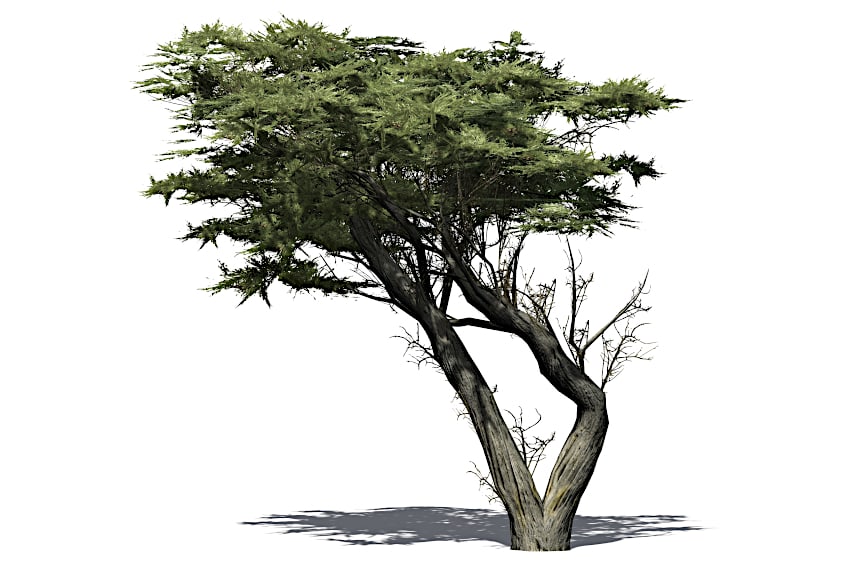
Monterey cypress wood is relatively easy to work with. While sawing cutting generally doesn’t come with much resistance to the blade, steam bending this wood can be challenging. Like Leyland cypress, this wood can also be knotty and have an irregular grain pattern despite the fact that most examples of the species are straight straight-grained.
Monterey Cypress is quite strong, sporting a Janka hardness rating of about 630, making it stronger than both Leyland cypress and bald cypress wood species. It is moderately resistant to rot and is virtually the same in appearance as Leyland cypress, featuring a reddish-yellow heartwood and a sapwood that has a paler reddish-yellow tone.
Properties and Characteristics of Cypress Wood
Cypress wood has many useful characteristics inherent to this specific type of softwood. Understanding its characteristics will not only help you choose the right wood for every project but also determine which species of cypress is best suited for an application. Here are some important characteristics of cypress wood you can familiarize yourself with if you intend to use it.
Appearance and Grain Pattern
What does cypress wood look like? Cypress wood, like most softwood species, is light in color especially when compared to hardwood species. As you may have noticed, cypress boards have a sapwood that is generally yellowish-red in color and a heartwood that is a pale variation of the same color combination.
This unique color palette makes cypress wood quite popular in the creation of small furnishings and trim accents.
The grain of cypress wood is generally considered easy to work with, featuring a grain pattern that is straight for the most part but can vary depending on individual examples of the wood. A common observation about almost all cypress wood species is that some specimens have oddly shaped grain and contain a variety of knots. If you have a healthy budget, then Cypress burlwood is a particularly attractive option for your next project.
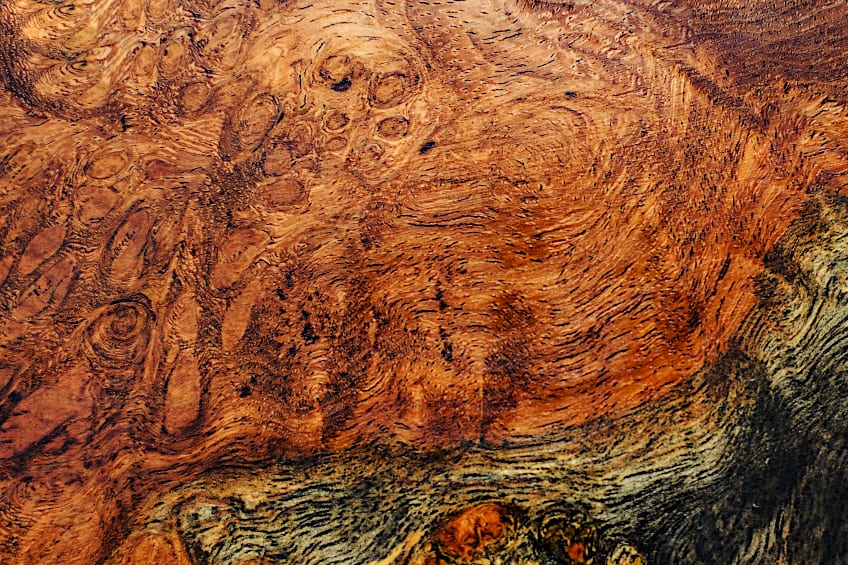
Dimensional Stability
Cypress wood has incredible dimensional stability. This is thanks to a number of its characteristics, primarily its density and grain pattern. Cypress wood is pretty dense, especially for a softwood species. Its density is rated at 510 kg meters cubed.
This densely packed wood grain is also what makes it so hard and durable.
Workability and Ease of Use
Even if a wood species is extremely robust and readily available, it doesn’t automatically mean that it will be widely used. As human beings, we tend to use materials that are the most convenient to work with. After all, unless you’re researching wood species your primary objective is to turn your wood into something, and the wood is difficult to work with, you might choose another wood species entirely.
So, is cypress lumber easy to work with? Absolutely, cypress wood isn’t only one of the sturdiest and rot-resistant softwood species, but it’s also one of the easiest to work with. Cypress wood has a grain that is primarily straight and is generally devoid of knots.
Natural Decay Resistance
One of the most common reasons that cypress wood is selected for a project (aside from being inexpensive) is the fact that it’s naturally resistant to rot and decay. Most wood species that have this characteristic have a high grain density or high resin content, and cypress wood is no different.
This combination of resin and tightly packed straight grain makes it highly resistant to decay.
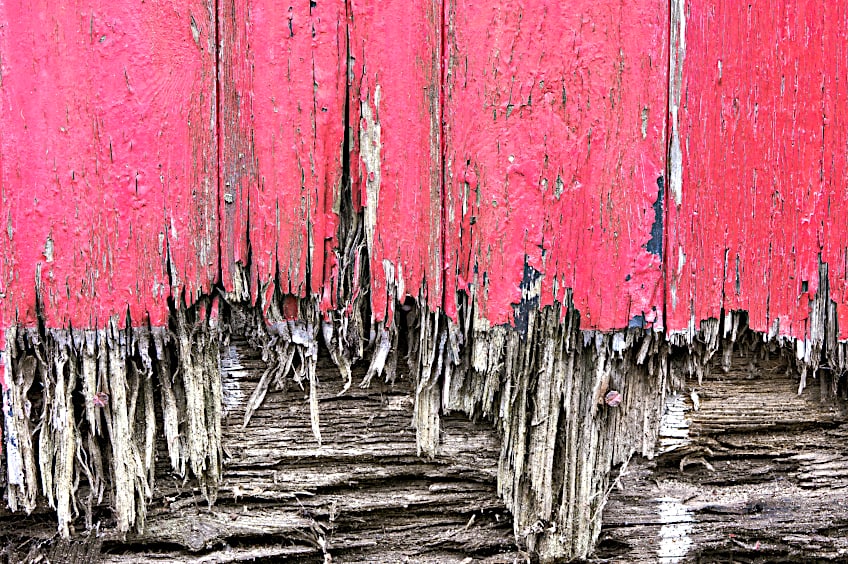
Aromatic Properties
What does cypress wood smell like? Cypress wood doesn’t smell particularly good, at least compared to other wood species. Many have claimed that the smell of cypress largely depends on the soil in which it is grown, but generally, it tends to have a noticeable, but not particularly unpleasant, smell to it.
It should be noted that if the smell does bother you, the wood can be treated to mask this scent.
Applications of Cypress Wood
What is Cypress wood used for? Cypress wood has a wide variety of uses across many industries all over the world. If you’d like to know what cypress wood is used for and why it is one of the best-suited wood species for these applications, here are a few common applications in which cypress wood is used and why.
Exterior Applications
Since exterior applications are fairly common due to their inherent resistance to rot and decay. You’d be surprised at just how many outdoor applications exterior paint can be used for.
Decking and Outdoor Furniture
Instead of getting some hardwood for your deck or outdoor furniture, you could try out some cypress wood instead. Cypress wood is strong enough to be used for outdoor furniture like light-duty chairs, tables, and even decking.
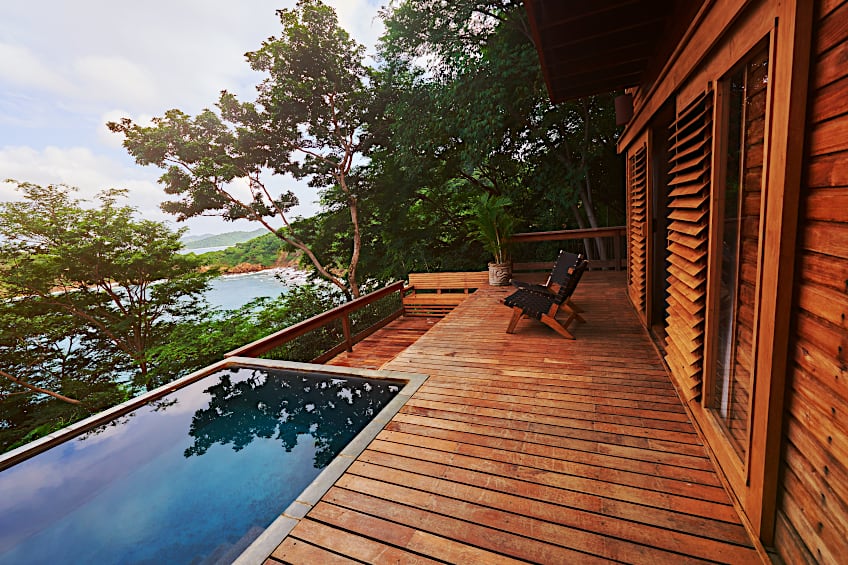
Thanks to its rot-resistant surface, you might not even need an additional coating for your outdoor furnishings, but it’s always a good idea to add one if the weather in your area is particularly rough.
Fences and Gates
The characteristics inherent to cypress wood make it a good wood for both fences and gates. Cypress wood is strong, resistant to rot, and can easily be manipulated into many shapes, so it’s the ideal material to make fences and gates out of.
If you intend to stake your cypress wood into the ground, we recommend additional treatment to ensure the integrity of your fence or gate in the future.
Interior Applications
What is cypress wood used for indoors? While cypress wood is strong, durable, rot-resistant, and relatively inexpensive which makes it great for outdoor use, it is also good for indoor applications. Here are a few common indoor applications that cypress wood can be used for.
Keep in mind that there are many more applications for cypress wood in and around the home too.
Cabinetry and Furniture
Aside from being hard-wearing and rot-resistant, cypress wood is also very easy to work with, which naturally led to it being a pretty popular material for making both furniture and cabinetry. Whether it be cupboard doors or lightweight chairs, the straight grain and overall ease of use cypress wood offers make it one of the best materials to make furnishings out of.
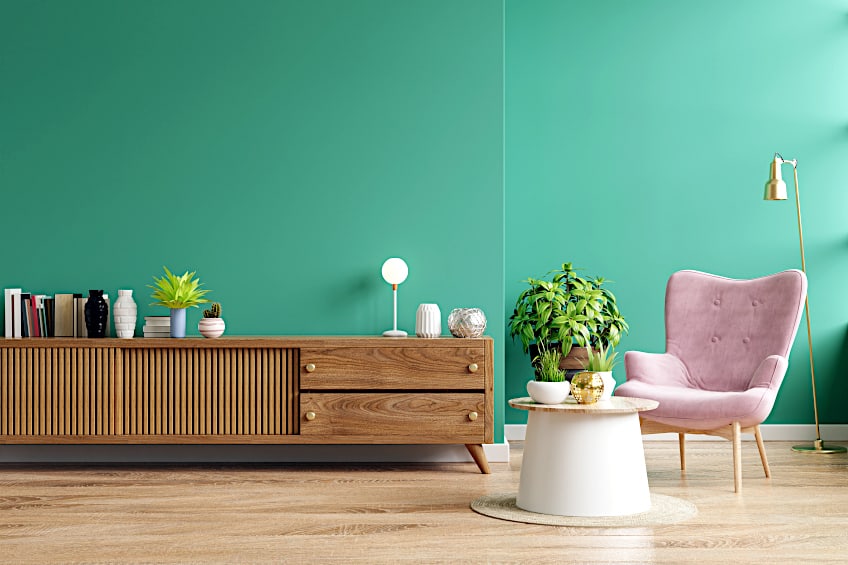
Flooring and Paneling
Since cypress wood can be used to make decking, it should come as no surprise that it can be used to make interior flooring as well, as it doesn’t need to be treated and is usually pretty sturdy too.
Cypress can also be used to fashion wooden paneling for your floors and ceiling if you like the look of it, and since it takes well to stain both your flooring and paneling will be highly customizable aesthetically.
Benefits of Cypress Wood
Cypress wood has a number of benefits that have made it extremely popular all over the world. What are some of these characteristics, you ask? To ensure you have a comprehensive understanding of the benefits of cypress wood we have detailed some of the things you can expect to enjoy when using this wood species to create a workpiece.
Durable and Stable
Wood species in the lower price ranges tend to be weaker than hardwood species, but cypress wood has strikingly good dimensional stability. Cypress wood does not warp or bend as easily as other softwood species which means you can rely on cypress wood workpieces to stand the test of time regardless of the application.
Cypress wood is exceptionally durable for softwood, being capable of withstanding body weight, impact, abrasion, and even harsh weather conditions.
If you want to avoid having to constantly replace your wooden structures the cypress wood might just be what you are looking for.
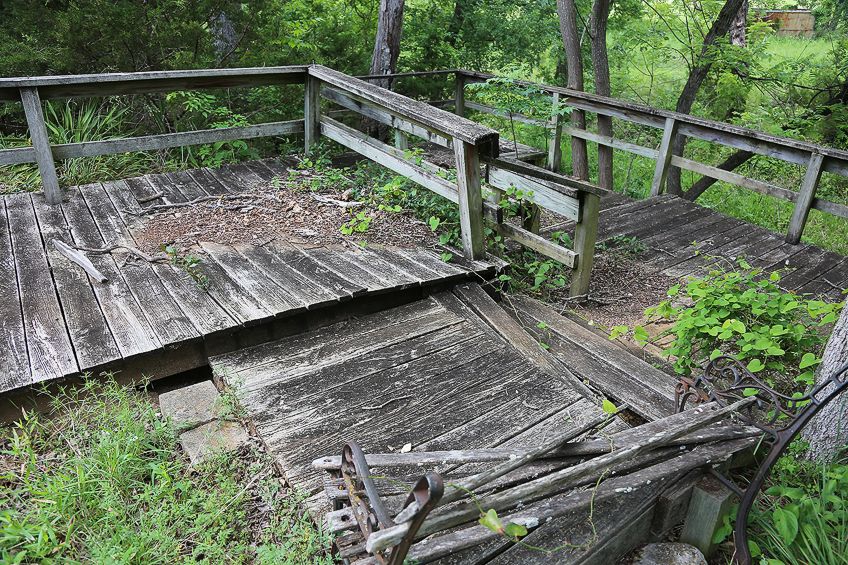
Water and Rot-Resistant
One of the biggest problems with using wood to make anything is the fact that it tends to take on water. Considering that wood is designed to facilitate water on its interior this can be challenging to work around, but thankfully cypress wood is incredibly water-resistant and easily dispels water vapor and water that pools up on its surface.
Cypress wood is also highly resistant to the effects of rot and decay.
This characteristic is inherent to cypress wood species to varying degrees, but the fact that it doesn’t have to undergo pressure treatment or sealing and can be used “straight out of the box” makes this wood a convenient and cost-effective material with which to construct outdoor workpieces.
Cypress Wood Preservation and Maintenance
Even if you have the most expensive wood species on the face of the planet, it won’t last very long if it isn’t maintained correctly. Cypress wood is no exception, so the better you take care of your cypress wood workpiece the longer it will last. Below are a few steps you can follow to ensure your cypress wood workpieces are in tip-top shape.
Proper Sealing and Finishing Techniques
We’ve mentioned that cypress wood is highly resistant to the effects of rot and moisture, but you shouldn’t confuse resistance with being impervious.
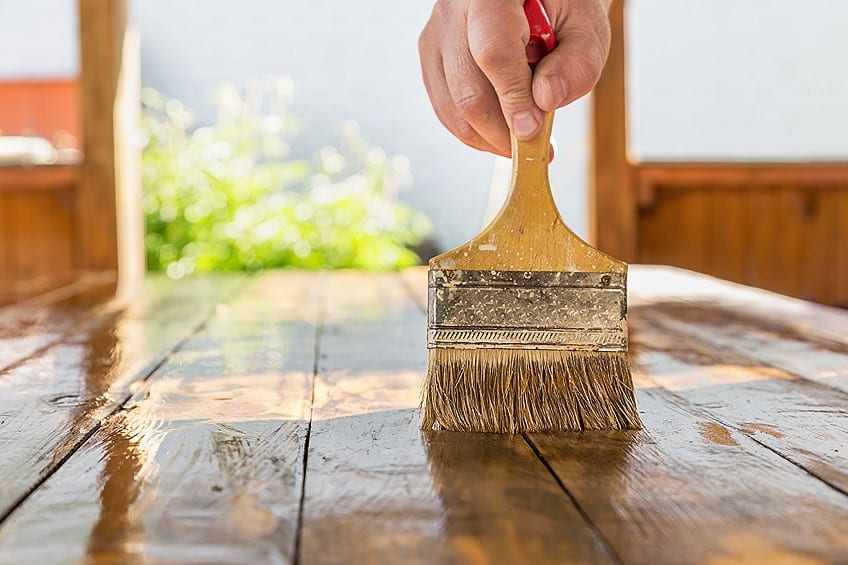
Cypress wood needs to be sealed and finished correctly if you intend to have your workpiece outdoors permanently. Cypress wood can be sealed using resin, wood sealer, and even exterior varnish to ensure the wood isn’t overwhelmed by the elements.
Cleaning and Maintenance
Cypress wood tends to attract a lot of dust especially if it isn’t sealed. Dusting the surface lightly with a dust mop or simply using a vacuum cleaner to clear the surface is the best way to go about it.
Cypress wood can be cleaned using soap and water should it be accidentally stained by a coffee spill or similar substances.
Protection Against Rot and Insect Infestation
Rot and insect infestation are generally associated with wood species that have been left outdoors, so the obvious way to avoid this is to not place your workpiece outdoors, but if you need to use your cypress workpiece outdoors we recommend a resin sealer, waterproof exterior paint, or similar coating to ensure your workpiece doesn’t get damaged.
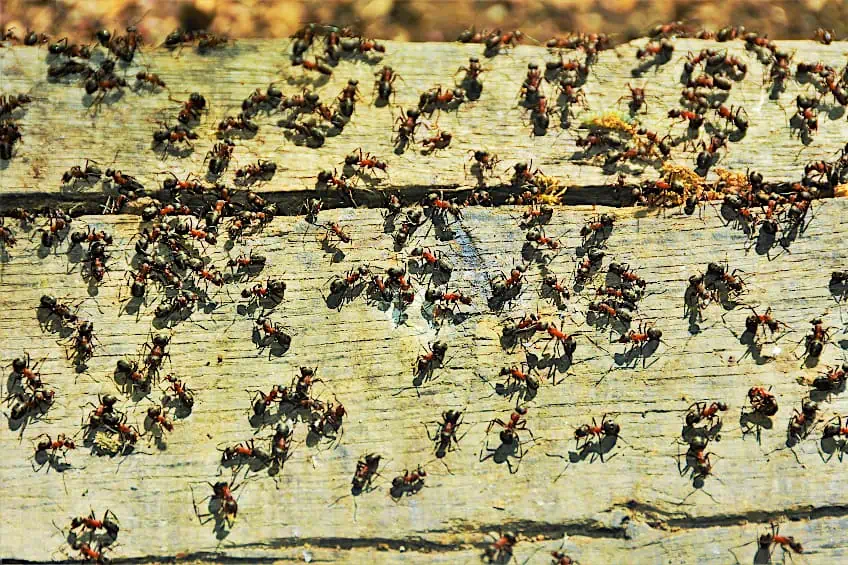
Cypress Wood vs. Other Wood Species
As we mentioned previously cypress wood is an incredibly popular wood species that has been used in many applications throughout various industries all over the globe. However, it isn’t the only popular wood species around, so let’s have a look at how well cypress wood stacks up against its competitors.
Cypress Wood vs. Cedar Wood
Cypress and cedar are very similar. They are both hard-wearing, they are both naturally rot resistant, they both are capable of supporting large amounts of weight, and they are both very easy to work with.
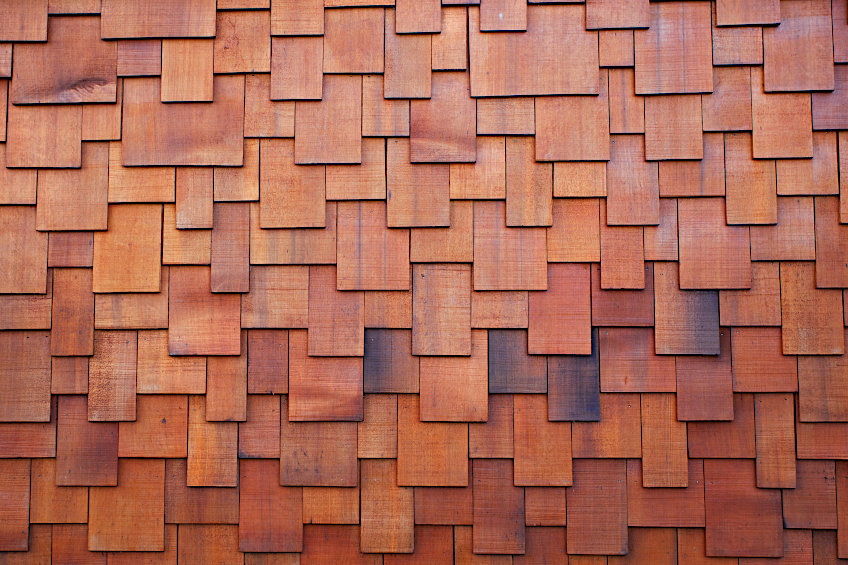
Cedar contains oil which gives it a unique scent, whereas cypress wood tends to have an earth-like tone. That being said, they are both commonly used both indoors and outdoors, with the primary difference being that cypress is much denser than cedar wood.
Cypress Wood vs. Pine Wood
While pine wood is a popular species when creating flooring and even fencing, cypress is objectively better in virtually every metric when compared to pine.
Cypress is denser, resistant to rot, lasts longer, and retains its shape much better than pine does.
However, cypress wood is more expensive than pine, which makes sense considering its inherent characteristics make it the superior wood.
Cypress Wood vs. Redwood
Cypress wood and redwood are very similar in pretty much every way. They are both very strong, they are both resistant to rot and decay, and they can both be used in construction applications. They also have similar grain patterns and sapwood colors, with the key difference between cypress and redwood being that redwood is considered endangered and therefore is not used for large-scale construction applications.
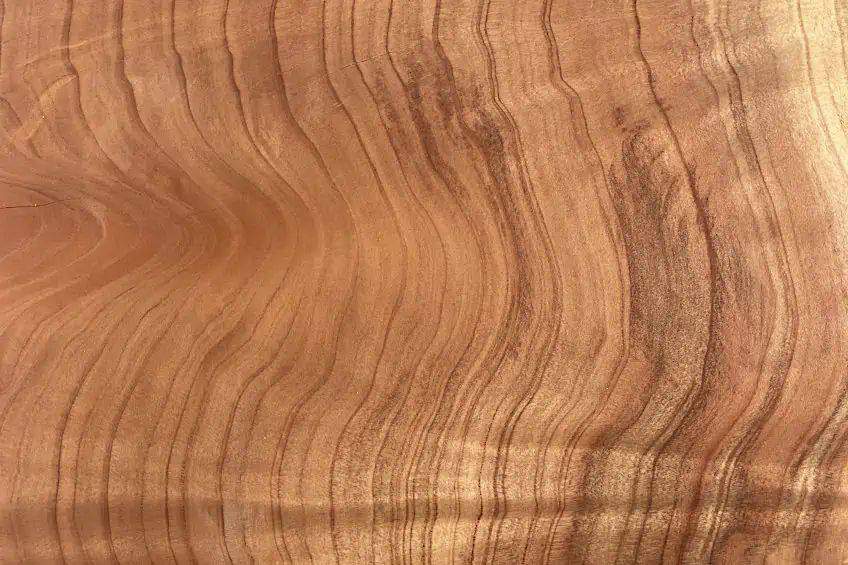
Tips for Working With Cypress Wood
If you’ve liked any of these ideas and can’t wait to try them out, you should know how to work with cypress wood before diving in head first. Cypress wood is easy to work with, but mistakes are easy to make when you’re all giddy. Here are a few tools and techniques to follow when you find yourself working with cypress wood.
Select the Right Tools
Cypress wood is comparable to hardwood species, so you’ll be using pretty much the same tools. As always, a sandpaper or power sander of 120-grit, a decent wood saw, some wood filler for any imperfections or knots, a set of clean cloths, wood fasteners, a high-quality sealer/paint, and of course a set of gloves and safety goggles.
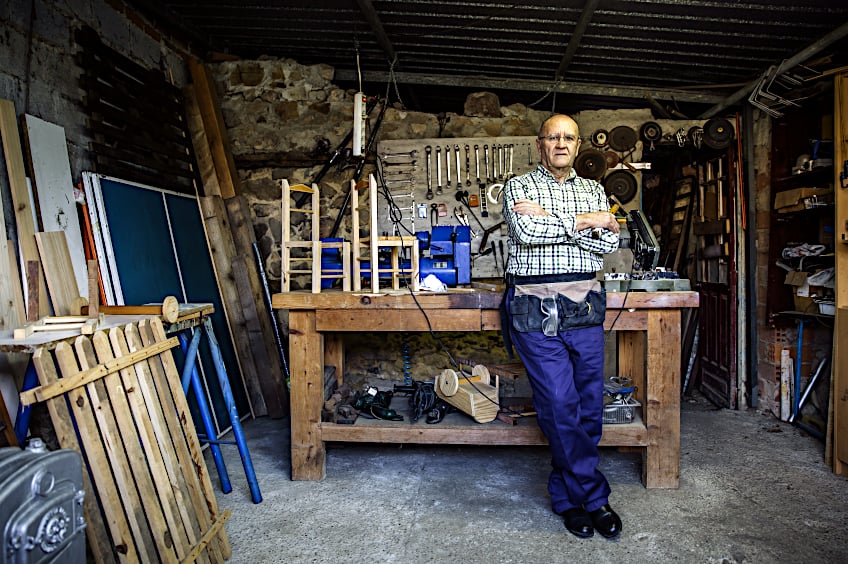
Proper Joinery Techniques
If you do choose to use a combination of fasteners and wood joins, then be sure to cut them incorrectly. Fashioning your joins correctly means that your workpiece will be stable and will have a seamless transition across the surface. Failing to do so can result in an unstable workpiece, so be sure to pay close attention when making your joins.
Cypress wood is a great wood for a number of applications, and if you’d like to get your hands on some, the wood can be found pretty easily. With that being said, if you do intend to use your cypress wood board outdoors, be sure to seal it well as even though it is resistant to rot, there are limits to this characteristic. Other than this, you can now see just how versatile and robust this wood species is.
Frequently Asked Questions
Is Cypress Wood Suitable for Humid Climates?
Cypress wood has the inherent characteristic of being water-resistant and rot-resistant. This means that placing cypress boards in moisture-rich environments will not immediately cause the wood to get soggy and disintegrate like other wood types.
Is Cypress a Hardwood?
Since wood is so sturdy and can be used in load-bearing applications, is cypress a hardwood? No, cypress is a softwood species that just happens to have a lot of the same characteristics as most hardwood species.
Does Cypress Wood Rot?
Knowing that cypress wood is considered to be so robust, does cypress wood rot in the presence of water? Cypress wood does not rot easily, but even wood species that are naturally resistant to the effects of rot have their limits.
Is Cypress Wood Expensive?
Considering its durability, versatility, and popularity, is cypress wood expensive? Cypress wood is moderately priced compared to hardwood species that offer the same characteristics. Cypress wood can be picked up for a maximum of $8 per board foot.
How Can I Protect My Cypress Wood from Weathering and Graying?
Cypress wood is inherently resistant to the effects of rot and moisture but if it is left exposed in a harsh environment, it can begin to degrade over time. Protecting your cypress wood with stain, varnish, paint, or sealer can extend the lifespan of your wood.
Does Cypress Wood Require Regular Maintenance?
Cypress wood, like any other material, requires occasional maintenance. However, depending on the application, cypress wood can require regular cleaning and resealing, especially if used as flooring in highly trafficked areas.

I have been into woodworking since 2005 and woodturning since 2011. Because of my love for wood and woodworking, I started woodhappen.com to teach other enthusiasts about how to finish and seal wood, the best woodworking tools, the different types of wood, and everything else related to woodworking! Read more about me here.

